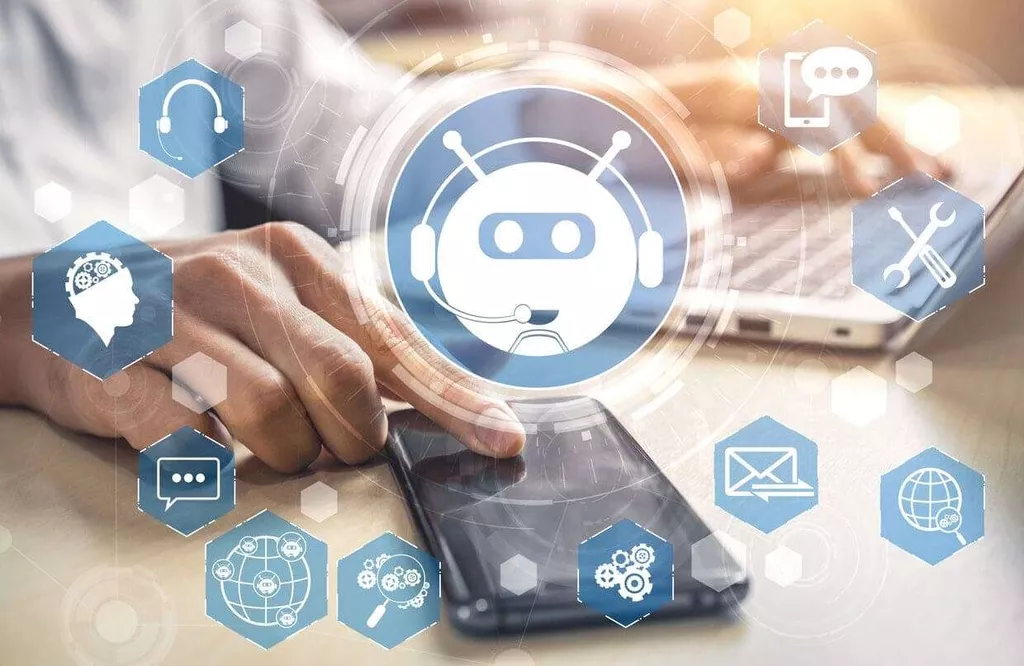10 Best Shopping Bots That Can Transform Your Business
The bot’s smart analytic reports enable businesses to understand their customer segments better, thereby tailoring their services to enhance user experience. WhatsApp chatbotBIK’s WhatsApp chatbot can help businesses connect with their customers on a more personal level. It can provide customers with support, answer their questions, and even help them place orders.
In the last few years, Shopify has devised custom, one-off defenses for retailers who want to stamp out bots from spoiling their major releases. In March, Mr. Lemieux gleefully tweeted a video of botters lamenting the difficulties of cracking Shopify’s custom bot protections. The face of Shopify’s bot defenses has been Jean-Michel Lemieux, a plain-spoken Canadian engineer who was, until recently, the company’s chief technology officer. His public antagonization of bot users — who are also known as botters — has made him something of a hero among sneakerheads. By around 2015, the site had 20,000 people appearing for major releases even though they only had a few hundred pairs of shoes. Bodega started offering web raffles, but people deployed bots for that, too.
Ecommerce chatbot use cases
Tobi is an automated SMS and messenger marketing app geared at driving more sales. It comes with various intuitive features, including automated personalized welcome greetings, order recovery, delivery updates, promotional offers, and review requests. Stores can even send special discounts to clients on their birthdays along with a personalized SMS message. Ada makes brands continuously available and responsive to customer interactions. You can foun additiona information about ai customer service and artificial intelligence and NLP. Its automated AI solutions allow customers to self-serve at any stage of their buyer’s journey.
- Our article today will look at the best online shopping bots to use in your eCommerce website.
- The no-code chatbot may be used as a standalone solution or alongside live chat applications such as Zendesk, Facebook Messenger, SpanEngage, among others.
- Streamlining the checkout process, purchase, or online shopping bots contribute to speedy and efficient transactions.
- In conclusion, shopping bots are a powerful tool for businesses as they navigate the world of online commerce.
- Online stores, marketplaces, and countless shopping apps have been sprouting up rapidly, making it convenient for customers to browse and purchase products from their homes.
- Once you’ve connected Chorus.ai to Slack, you can share specific clips from your calls with your team.
But that means added time and resources to implement a chatbot on each channel before you actually begin using it. Imagine having to “immediately” respond to a hundred queries across your website and social media channels—it’s not possible to keep up. Here are some other reasons chatbots are so important for improving your online shopping experience. A chatbot is a computer program that stimulates an interaction or a conversation with customers automatically. These conversations occur based on a set of predefined conditions, triggers and/or events around an online shopper’s buying journey. Generating valuable data on customer interactions, preferences, and behaviour, purchase bots empower merchants with actionable insights.
Shopping bots allow retailers to monitor competitor pricing in real-time and make strategic adjustments. As bots interact with you more, they understand preferences to deliver tailored recommendations versus generic suggestions. Shopping bots eliminate tedious product search, coupon hunting, and price comparison efforts. Based on consumer research, the average bot saves shoppers minutes per transaction. This is important because the future of e-commerce is on social media.
The Opesta Messenger integration allows you to build your marketing chatbot for Facebook Messenger. About Chatbots is a community for chatbot developers on Facebook to share information. FB Messenger Chatbots is a great marketing tool for bot developers who want to promote their Messenger chatbot. The Dashbot.io chatbot is a conversational bot directory that allows you to discover unique bots you’ve never heard of via Facebook Messenger. Dashbot.io is a bot analytics platform that helps bot developers increase user engagement. Dashbot.io gathers information about your bot to help you create better, more discoverable bots.
In so doing, these changes will make buying processes more beneficial to the customer as well as the seller consequently improving customer loyalty. Moreover, AI chatbots have been combined with other latest advances in technology like augmented reality (AR) and the internet of things (IoT). For example, IoT allows for seamless shopping experiences across multiple devices.
Streamlined shopping experience
In conclusion, shopping bots are a powerful tool for businesses as they navigate the world of online commerce. In this blog post, we have taken a look at the five best shopping bots for online shoppers. We have discussed the features of each bot, as well as the pros and cons of using them. BIK is a customer conversation platform that helps businesses automate and personalize customer interactions across all channels, including Instagram and WhatsApp.
Its unique features include automated shipping updates, browsing products within the chat, and even purchasing straight from the conversation – thus creating a one-stop virtual shop. So, let us delve into the world of the ‘best shopping bots’ currently ruling the industry. The bot continues to learn each customer’s preferences by combining data from subsequent chats, onsite shopping habits, and H&M’s app.
Over the last decade, most major sneaker brands have turned to high-profile collaborations. Kanye West worked with Nike and Adidas on realizing his vision for Yeezys. Nike teamed with Virgil Abloh’s Off-White to put a new spin on popular shoes from the company’s archives. Nike also tapped the design sense of Travis Scott for more than a dozen pairs of shoes since 2017. Thanks to resale sites like StockX and GOAT, collectible sneakers have become an asset class, where pricing corresponds loosely to how quickly an item sells out.
For instance, customers can have a one-on-one voice or text interactions. They can receive help finding suitable products or have sales questions answered. This software offers personalized recommendations designed to match the preferences of every customer.
This means the digital e-commerce experience is more important than ever when attracting customers and building brand loyalty. Mindsay specializes in personalized customer interactions by deploying AI to understand customer queries and provide appropriate responses. For example, it can do booking management, deliver product information and respond to customers’ questions thus making it ideal for travel and hospitality business. Online shopping has changed forever since the inception of AI chatbots, making it a new normal. This is due to the complex artificial intelligence programs that influence customer-ecommerce interactions. Moreover, this product line will develop even further and make people shop online in an easier manner.
And as we established earlier, better visibility translates into increased traffic, higher conversions, and enhanced sales. With Mobile Monkey, businesses can boost their engagement rates efficiently. Its ability to implement instant customer feedback is an enormous benefit. With Madi, shoppers can enjoy personalized fashion advice about hairstyles, hair tutorials, hair color, and inspirational things. Its key feature includes confirmation of bookings via SMS or Facebook Messenger, ensuring an easy travel decision-making process.
Ecommerce businesses use ManyChat to redirect leads from ads to messenger bots. Tidio can answer customer questions and solve problems, but it can also track visitors across your site, allowing you to create personalized offers based on their activities. Businesses benefit from an in-house ecommerce chatbot platform that requires no coding to set up, no third-party dependencies, and quick and accurate answers. I’ve done most of the research for you to provide a list of the best bots to consider in 2024.
In lieu of going alone, Kik also lists recommended agencies to take your projects from ideation to implementation. Kik Bot Shop focuses on the conversational part of conversational commerce. This will ensure the consistency of user experience when interacting with your brand. So, choose bots for purchasing online the color of your bot, the welcome message, where to put the widget, and more during the setup of your chatbot. You can also give a name for your chatbot, add emojis, and GIFs that match your company. We’re aware you might not believe a word we’re saying because this is our tool.
Surge in Bad Bot Threats Forces Retailers To Bolster Cyber Defenses – E-Commerce Times
Surge in Bad Bot Threats Forces Retailers To Bolster Cyber Defenses.
Posted: Wed, 19 Jun 2024 07:00:00 GMT [source]
They can choose to engage with you on your online store, Facebook, Instagram, or even WhatsApp to get a query answered. Now based on the response you enter, the AI chatbot lays out the next steps. More interestingly, upon finding the products customers want, NexC ranks the top three that suit them best, along with pros, cons and ratings. This way, you’ll find out whether you’re meeting the customer’s exact needs. If not, you’ll get the chance to mend flaws for excellent customer satisfaction.
But as the business grows, managing DMs and staying on top of conversations (some of which are repetitive) can become all too overwhelming. While most ecommerce businesses have automated order status alerts set up, a lot of consumers choose to take things into their own hands. With the help of chatbots, you can collect customer feedback proactively across various channels, or even request product reviews and ratings. Additionally, chatbots give you the ability to gauge negative feedback before it goes online, so you can resolve a customer issue before it gets posted about. The good news is that there’s a smart solution to do it all at scale—ecommerce chatbots. One notable example is Fantastic Services, the UK-based one-stop shop for homes, gardens, and business maintenance services.
Moreover, you can run time-limited special promotions and automate giveaways, challenges, and quizzes within your online shopping bot. Using SendPulse, you can create customized chatbot scripts and easily replicate flows within or across messaging apps. Your messages can include multiple text elements, images, files, or lists, and you can easily integrate product cards into your shopping bots and accept payments. SendPulse is a versatile sales and marketing automation platform that combines a wide variety of valuable features into one convenient interface. With this software, you can effortlessly create comprehensive shopping bots for various messaging platforms, including Facebook Messenger, Instagram, WhatsApp, and Telegram.
What I didn’t like – They reached out to me in Messenger without my consent. I recommend experimenting with different ecommerce templates to see which ones work best for your customers. Receive products from your favorite brands in exchange for honest reviews. A shopper tells the bot what kind of product they’re looking for, and NexC quickly uses AI to scan the internet and find matches for the person’s request.
Respond to leads faster by routing and assigning leads in Slack in real-time. Mosaic is like a personal assistant making your day a little more seamless. Send your requests via Facebook Messenger or Slack, and the bot will use AI to process your commands and follow through. Poncho’s bot sends you weather updates every morning and evening, so you’re always prepared and wearing the right outfit.
Actionbot acts as an advanced digital assistant that offers operational and sales support. It can observe and react to customer interactions on your website, for instance, helping users fill forms automatically or suggesting support options. The digital assistant also recommends products and services based on the user profile or previous purchases. The emerging technologies will shape the direction of future AI chatbots that will revolutionize ecommerce completely. Machine learning technology enhancements and natural language processing will enhance user-friendliness of shopping bots as expected (Pascual & Urzaiz, 2017).

BargainBot seeks to replace the old boring way of offering discounts by allowing customers to haggle the price. The bot can strike deals https://chat.openai.com/ with customers before allowing them to proceed to checkout. It also comes with exit intent detection to reduce page abandonments.
Once the software is purchased, members decide if they want to keep or “flip” the bots to make a profit on the resale market. Here’s how one bot nabbing and reselling group, Restock Flippers, keeps its 600 paying members on top of the bot market. Some private groups specialize in helping its paying members nab bots when they drop.
My Not-So-Perfect Holiday Shopping Excursion With A.I. Chatbots – The New York Times
My Not-So-Perfect Holiday Shopping Excursion With A.I. Chatbots.
Posted: Thu, 14 Dec 2023 08:00:00 GMT [source]
For example, they can assist clients seeking clarification or requesting assistance in choosing products as though they were real people. It is an interactive type of AI because it learns after each interaction such that sometimes it can only attend to one person at a time. If you aren’t using a Shopping bot for your store or other e-commerce tools, you might miss out on massive opportunities in customer service and engagement. Like WeChat, the Canadian-based Kik Interactive company launched the Bot Shop platform for third-party developers to build bots on Kik. Keeping with Kik’s brand of fun and engaging communication, the bots built using the Bot Shop can be tailored to suit a particular audience to engage them with meaningful conversation. The Bot Shop’s USP is its reach of over 300 million registered users and 15 million active monthly users.
CelebStyle allows users to find products based on the celebrities they admire. The bot also offers Quick Picks for anyone in a hurry and it makes the most of social by allowing users to share, comment on, and even aggregate wish lists. Letsclap is a platform that personalizes the bot experience for shoppers by allowing merchants to implement chat, images, videos, audio, and location information. You can use one of the ecommerce platforms, like Shopify or WordPress, to install the bot on your site. Take a look at some of the main advantages of automated checkout bots. Discover how this Shopify store used Tidio to offer better service, recover carts, and boost sales.
- The two things each of these chatbots have in common is their ability to be customized based on the use case you intend to address.
- Such a customer-centric approach is much better than the purely transactional approach other bots might take to make sales.
- This bot is remarkable because it has a very strong analytical ability that enables companies to obtain deep insights into customer behavior and preferences.
- Make sure you test all the critical features of your shopping bot, as well as correcting bugs, if any.
This makes it easier for customers to navigate the products they are most likely to purchase. Botsonic is another excellent shopping bot software that empowers businesses to create customized shopping bots without any coding skills. Powered by GPT-4, the service enables you to effortlessly tailor conversations to your specific requirements. SendPulse allows you to provide up to ten instant answers per message, guiding users through their selections and enhancing their overall shopping experience. They can serve customers across various platforms – websites, messaging apps, social media – providing a consistent shopping experience. This is one of the best shopping bots for WhatsApp available on the market.
And if you’d like, you can also have automatic updates for new customers, invoices viewed, and more. It’s like having an army of personal assistants living inside your favorite chat platforms, ready to help you out at any time. Ahead of a special release, the New Balance 990v3 to celebrate Bodega’s 15th anniversary, the boutique and Shopify had devised a few obstacles to slow the bots down. The first was to place the product on a brand-new website with an unguessable address — analogwebsitewrittenonpaper.com. Bots are not illegal, nor are they exclusive to the sneaker industry. During the pandemic, people amassed stockpiles of video game consoles, graphics chips and even children’s furniture using bots.
It does this through a survey at the end of every conversation with your customers. As you can see, there are many ways companies can benefit from a bot for online shopping. Businesses can collect valuable customer insights, enhance brand visibility, and accelerate sales. The assistance provided to a customer when they Chat GPT have a question or face a problem can dramatically influence their perception of a retailer. A mobile-compatible shopping bot ensures a smooth and engaging user experience, irrespective of your customers’ devices. Clearly, armed with shopping bots, businesses stand to gain a competitive advantage in the market.
A simple chatbot will ask you for the order number and provide you with an order status update or a tracking URL based on the option you choose. To order a pizza, this type of chatbot will walk you through a series of questions around the size, crust, and toppings you’d like to add. It will walk you through the process of creating your own pizza up until you add a delivery address and make the payment. While many serve legitimate purposes, violating website terms may lead to legal issues. A purchasing bot is a specialized software that automates and optimizes the procurement process by streamlining tasks like product searches, comparisons, and transactions. As a result, you’ll get a personalized bot with the full potential to enhance the user experience in your eCommerce store and retain a large audience.
Fortay uses AI to assess employee engagement and analyze team culture in real time. This integration lets you learn about your coworkers and make your team happy without leaving Slack. One of the most popular AI programs for eCommerce is the shopping bot.


